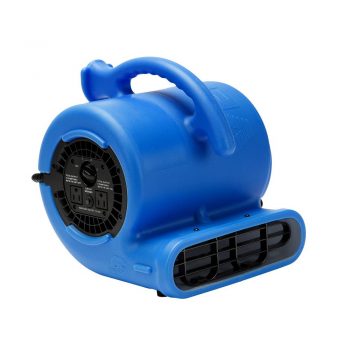
Mold and mildew not only look and smell gross, but can be hazardous to your health — and your home. They’re not just grime, they’re actual microorganisms — fungi to be exact. Mold and mildew thrive in moist, warm conditions. A leaky roof, humidity, poor drainage, or any other moisture-causing condition can encourage mold and mildew to grow. Yuck! The good news is, it’s easy to prevent mold and mildew by controlling moisture. And if you do see some of it creeping up, it’s not difficult to get rid of in the early stages. Here are some tips to help you fight — and win — the battle of mold and mildew.
1. Know the Signs
The most obvious sign of a mold and mildew issue is when you can see it. You might see specks or thread-like growths in your bathroom, around windows, or in ceilings or walls. Before that, however, you may notice damp spots, indicating prime conditions for growth. There may be a musty smell. If you have asthma or allergies, you may experience a runny nose, watery eyes, rash, cough, or congestion. Some people experience unexplained nausea, headaches, or fatigue. Sometimes, however, there are no outward signs at all, and you’ll find mold and mildew growing when you embark on a home remodel or other project.

2. If it’s Leaking, Fix It
Mold and mildew cannot grow without moisture. If you can prevent leaks and excess humidity, you can keep mold and mildew out of your home. Make sure any leaks are promptly repaired. This may include roofs, windows, plumbing, foundation cracks, heating and A/C problems, and more. If it has to do with water and starts leaking, it must be addressed right away to prevent mold and mildew growth. Also, make sure doors, windows, and other possible inlets for moisture are sealed with caulk and inspected regularly.

3. Proper Ventilation
Where we sometimes have a problem at home is when someone (usually the kids) take a long shower without opening a window. Many homes have a ventilation fan in every bathroom, but in a lot of places, this isn’t a code requirement if the bathroom has a window. Whatever your bathrooms have for ventilation, remember to use it every time. Open windows, use the fan, and do whatever you can to let moisture out while bringing fresh air in. Without ventilation, humidity will build up and can cause mold or mildew to grow.

4. Dry it Out
Say you’ve cleaned your carpet or upholstery. Make sure you help things dry out as quickly as possible. Use large fans, open windows, even dry that wet spot on the couch with the hair dryer. Even if it feels dry to you, there may still be moisture lingering underneath. And when it comes to mildew or mold, moisture is the enemy. If your basement has flooded, pull up the carpet and get it dried out as soon as possible. It’s always better to hire someone for professional cleanup in this situation — and your homeowner insurance will probably cover the expense.

5. De-Humidifiers
If you live in a humid climate or are concerned about moisture levels in your home, you can install a whole-house dehumidifier (ask your HVAC provider) or get a stand-alone model for a specific area. You can set your own preferred indoor humidity level (30-50% is best).

6. Insulate and Ventilate
Moist, warm air tends to build up in your home’s attic, so you need proper ventilation to help dissipate it outside, and insulation to keep temperatures as constant as possible. Installing an attic fan is always a good idea, especially if your bathroom fans exhaust to the attic (many do). Solar models are even available. If you have a crawlspace, any dirt floor areas should be covered with a vapor barrier, such as plastic, to prevent any moisture in the soil from increasing your home’s humidity levels. Just make sure to dry out any moisture in that dirt floor before covering it.




Leave a Reply